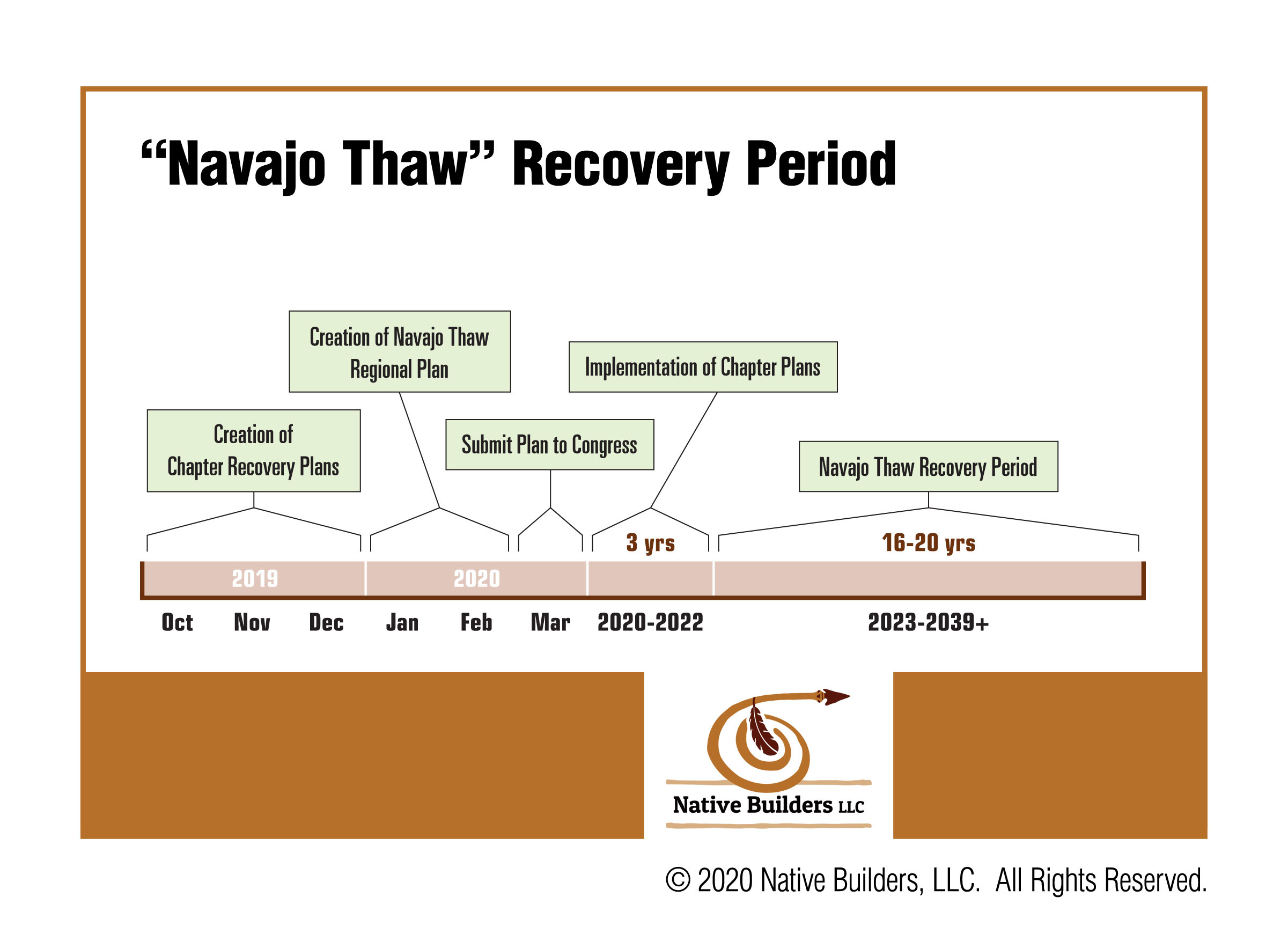About the Navajo Thaw
Life Under the Bennett Freeze
 For 40 years, the Bennett Freeze has literally "frozen” development opportunities for 20,000 Navajo people. Under the Freeze our people have endured deplorable living conditions, deficient or non-existent infrastructure, overcrowded and dilapidated housing, and negligible job opportunities, all of which has resulted in a decades-long condition of hopelessness.
For 40 years, the Bennett Freeze has literally "frozen” development opportunities for 20,000 Navajo people. Under the Freeze our people have endured deplorable living conditions, deficient or non-existent infrastructure, overcrowded and dilapidated housing, and negligible job opportunities, all of which has resulted in a decades-long condition of hopelessness.
But hope is kindled anew with the Navajo Thaw—the dawning of a post-freeze era of investment and hope. As detailed in the Navajo Thaw Implementation Plan, the Navajo Thaw promises to bring the people of the region together at the Chapter level to identify their strategies, initiatives, projects and priorities that will lead to better economic conditions and higher quality of life.
Employing an ambitious reinvestment strategy, the Navajo Thaw Implementation Plan will leverage the collective power and energy of the Chapters to secure Federal funding for development on large-scale projects with region-wide impact.

The Navajo Thaw looks to deliver a future in which people will no longer have to travel hundreds of miles simply to have potable water, or to have to move to a border town to find a good job. The nine Chapters that comprise the Navajo Thaw will have a brilliant future and a new model for investment and governance will be born.
Keeping the Promise
A promise was made to the Navajo people when thousands of Navajos were required to relocate as a result of the Navajo-Hopi Land Dispute. The Promise that was made related to better housing. It was made related to infrastructure and jobs. The Promise also made a commitment toward community facilities and other quality of life investments that would make up for the hardship endured by generations of Navajo people.
But instead of keeping the Promise, the major focus was simply to relocate the Navajo people. Relocation meant separation from family. Relocation meant separation from our way of life. Separation meant walking away from living in concert with the land to create and maintain a lifestyle that was cherished by generations.
Only through the Navajo Thaw Implementation Plan will the Promise made by the Federal government be met.
Priorities
One of the top priorities of Navajo Nation leadership has been to positively address the FBFA. These priorities were articulated in the campaign of 2018, and they have been made clear in leadership communications: stop talking and start working toward the solution. The Navajo Thaw Implementation Plan is this comprehensive response to the vision of the Navajo Nation leadership to make this difference.
24th Navajo Nation Council and the Navajo-Hopi Land Commission
There are 24 Delegates of the Navajo Nation Council, three of whom directly represent the Navajo Thaw region through their service on the Navajo-Hopi Land Commission (NHLC):
- Delegate Otto Tso
- Delegate Thomas Walker
- Delegate Paul Begay
Six additional Navajo Nation Council Delegates sit on the NHLC, a governmental body working to address the problems of the FBFA.
Collaboration with the Federal Delegation
 Congressman Tom O’Halleran has made addressing the Former Bennett Freeze Area a priority. Congressman O’Halleran has asked for a Plan—a Regional Plan—that incorporates the needs, hopes and possibilities of the entire area.
Congressman Tom O’Halleran has made addressing the Former Bennett Freeze Area a priority. Congressman O’Halleran has asked for a Plan—a Regional Plan—that incorporates the needs, hopes and possibilities of the entire area.
It is the intent of this Plan to bring together Congressional leadership with Navajo leadership and Arizona leadership to create a true Native American success story. Responding to the challenge by Congressman O’Halleran to create “One Plan” is the first step of this journey.
Next Steps
Moving the Navajo Thaw forward begins with Chapter leadership. Each Chapter will appoint a Steering Committee that will conduct Plan Week—a two-day, intensive planning session that, combined with existing information and work already completed by each Chapter, will yield a Chapter-specific economic development strategic plan. This work should be completed by the end of 2019. A Regional Summit will be conducted in very early 2020 which will yield the NTIP Regional Plan by March 2020. And then it is time to get to work!


